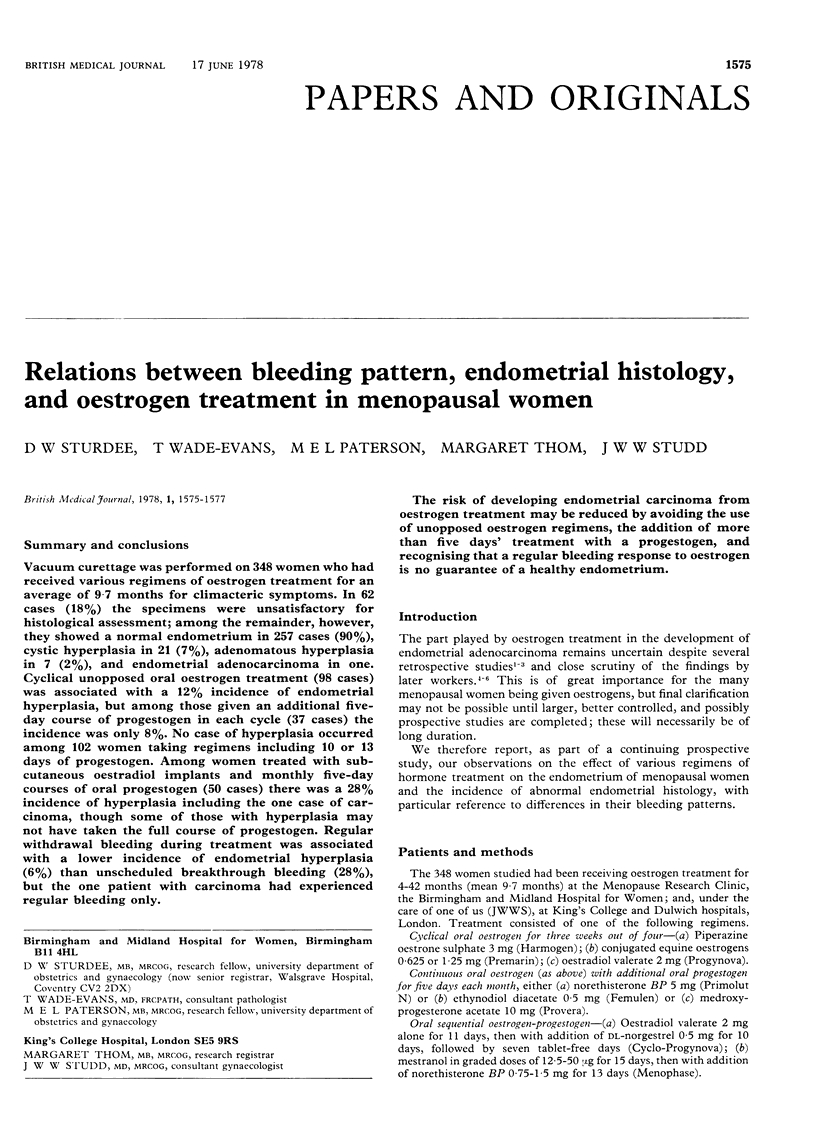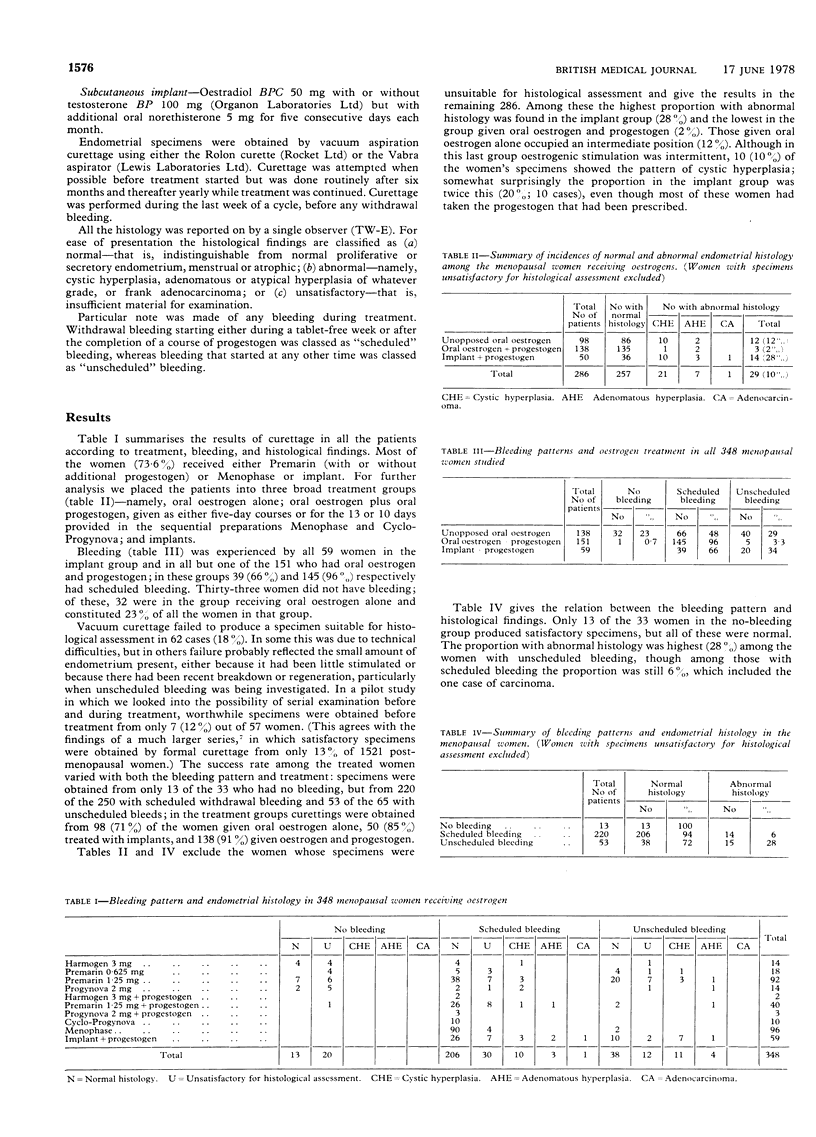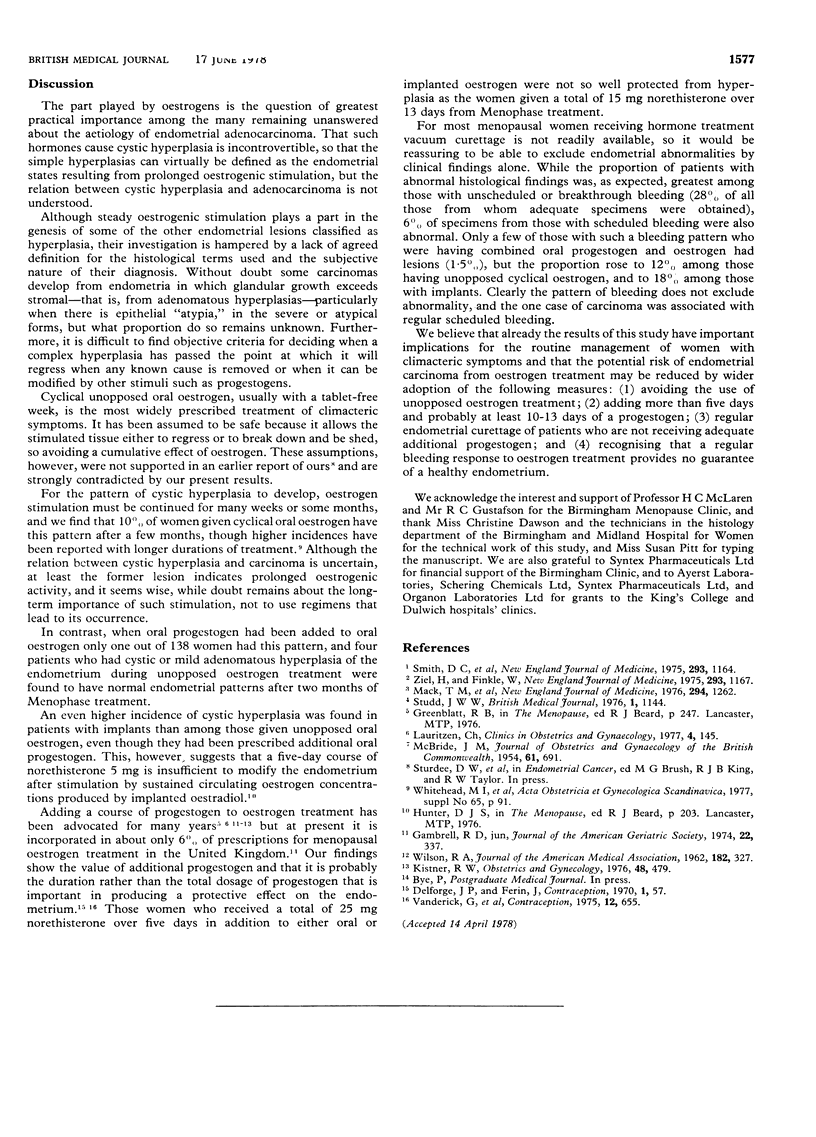Abstract
Vacuum curettage was performed on 348 women who had received various regimens of oestrogen treatment for an average of 9·7 months for climacteric symptoms. In 62 cases (18%) the specimens were unsatisfactory for histological assessment; among the remainder, however, they showed a normal endometrium in 257 cases (90%), cystic hyperplasia in 21 (7%), adenomatous hyperplasia in 7 (2%), and endometrial adenocarcinoma in one. Cyclical unopposed oral oestrogen treatment (98 cases) was associated with a 12% incidence of endometrial hyperplasia, but among those given an additional five-day course of progestogen in each cycle (37 cases) the incidence was only 8%. No case of hyperplasia occurred among 102 women taking regimens including 10 or 13 days of progestogen. Among women treated with subcutaneous oestradiol implants and monthly five-day courses of oral progestogen (50 cases) there was a 28% incidence of hyperplasia including the one case of carcinoma, though some of those with hyperplasia may not have taken the full course of progestogen. Regular withdrawal bleeding during treatment was associated with a lower incidence of endometrial hyperplasia (6%) than unscheduled breakthrough bleeding (28%), but the one patient with carcinoma had experienced regular bleeding only.
The risk of developing endometrial carcinoma from oestrogen treatment may be reduced by avoiding the use of unopposed oestrogen regimens, the addition of more than five days' treatment with a progestogen, and recognising that a regular bleeding response to oestrogen is no guarantee of a healthy endometrium.
Full text
PDF


Selected References
These references are in PubMed. This may not be the complete list of references from this article.
- Kistner R. W. Estrogens and endometrial cancer. Obstet Gynecol. 1976 Oct;48(4):479–482. [PubMed] [Google Scholar]
- Mack T. M., Pike M. C., Henderson B. E., Pfeffer R. I., Gerkins V. R., Arthur M., Brown S. E. Estrogens and endometrial cancer in a retirement community. N Engl J Med. 1976 Jun 3;294(23):1262–1267. doi: 10.1056/NEJM197606032942304. [DOI] [PubMed] [Google Scholar]
- Vanderick G., Beernaert J., de Muylder E., Ferin J. Hormonal contraception. Sequential formulations and the endometrium. Contraception. 1975 Dec;12(6):655–664. doi: 10.1016/s0010-7824(75)80049-7. [DOI] [PubMed] [Google Scholar]
- Ziel H. K., Finkle W. D. Increased risk of endometrial carcinoma among users of conjugated estrogens. N Engl J Med. 1975 Dec 4;293(23):1167–1170. doi: 10.1056/NEJM197512042932303. [DOI] [PubMed] [Google Scholar]


